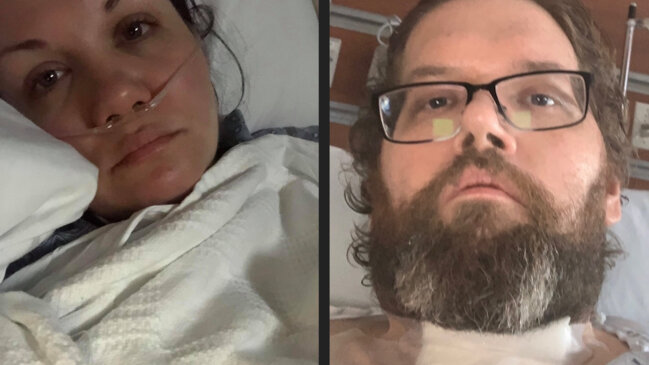Worst hospital waiting lists in Tasmania revealed
Thousands of patients are waiting so long for surgery doctors fear the backlog will never be cleared. See Tasmania’s worst offenders.

Exclusive: Covid’s devastating toll on public hospitals means thousands of patients are waiting so long for surgery doctors fear the backlog will never be cleared unless more hospital beds are funded.
A new report card released by the Australian Medical Association shows even though it’s been relatively free of Covid, Tasmania had one of the worst declines in elective surgery in the nation.
The total number of elective surgeries carried out in Tasmania fell 15 per cent in 2019-20 compared to 2018-19.
Category 2 surgeries that must be performed within 90 days declined 17 per cent compared to 2018-19, while less urgent Category 3 surgeries including hip and knee replacements declined the most – 31 per cent in 2019-20 compared to the previous year.
This was the worst decline in the nation and compares to the 12.2 per cent fall in Category 3 surgeries Victoria which has borne the brunt of the nation’s Covid infections.
There were more than 10,776 patients waiting for elective surgery in Tasmania last month down from 11,666 a year ago.
However, some patients have been waiting more than 642 days for less urgent surgery like hip and knee replacements.
Even wait times for urgent surgery meant to be done within 30 days including limb amputation, biopsies, removal of malignant skin cancers, removal of kidney stones can be as long as an unacceptable 121 days.

More than 56,000 patients were waiting to see a specialist in a hospital outpatient clinic — the first step before they can even be put on the state’s surgery waiting list.
Waiting times for these appointments were as high as 2043 days for semi-urgent appointments.
Emergency Department performance also slipped with just 54 per cent of patients treated within four hours down from 60 per cent last October.
Across the nation 150,000 of the 837,000 patients admitted to public hospital waiting lists in the year to June 2021 were not treated, the report card reveals.
One in four Category 2 patients — which includes people needing cancer investigations, heart valve replacements, craniotomies for unruptured brain clots — were not treated within the recommended 90 day time frame.
One in five patients who needed Category 3 surgeries waited more than a year.
A staggering 8813 people waiting for elective surgery either died or were unable to be contacted before they had their surgery.
AMA president Dr Omar Khorshid said governments needed to “build up the long-term capacity of the public hospital system so that it is fit for purpose as it faces a vastly different environment that the pandemic has created”.

An extra 6850 public hospital beds were required nationwide by 2024-25 just to maintain the current, lowest in 27 years, ratio of beds to those 65 years and older and federal government funding had to be lifted to 50 per cent of public hospital costs, he said.
“The human cost of delayed treatment is real and patients were already waiting, in some cases, years to access care well before this pandemic started,” he said.
At the state’s one major hospital — Royal Hobart Hospital — half the patients were waiting more than 196 days for surgery in 2019-20.
The Australian Medical Association says public hospitals were in crisis because there were not enough beds available on hospital wards to admit the patients arriving at emergency departments.
Those aged over 65 are responsible for 40 per cent of public hospital activity.
However, the number of beds for every 1000 people in this aged group has been declining for 27 years.
“Now more than ever Tasmania’s hospital health system needs vision, reform, support, and significant investment – particularly ICT, ideally via a single funder model to take hospital health services into the future that can deliver more inpatient beds to ease bed block and fund integrated and preventative care in the community,” AMA Tasmania president Dr Helen McArdle said.
“A wholistic system that responds seamlessly to changes in demand from an older, sicker population and that can attract and retain health professionals across all specialities.”
More Coverage
Originally published as Worst hospital waiting lists in Tasmania revealed



